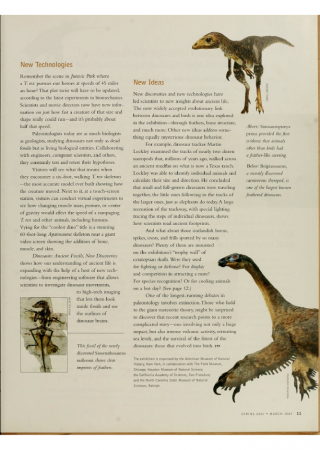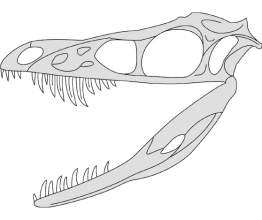Chinese raptor
- ...the Sinornithosaurus' body was covered with feathers, which certainly did not serve for flight, but likely as insulation for warmth?
- ...Sinornithosaurus was a close relative of the predatory Velociraptor and Deinonychus?
- ...fossilized melanosomes have been found with Sinornithosaurus fossils, from which we know that the feathers of this dinosaur were orange, yellow and black?
- ...the name Sinornithosaurus is from Latin and Greek, and means "Chinese bird lizard"?
- ...sinornithosaurus was discovered by scientists of the Institute of Vertebrate Paleontology and Paleoanthropology in Beijing?
- ...a study was published in 2009 indicating that Sinornithosaurus may have been poisonous?
Basic information:
Phylum - chordates (Chordata)
Class - reptiles (Reptilia)
Maximum length - 90 cm
Food - small vertebrates
Distribution - China, Liaoning province
Type of poison - unknown
Distinguishing marks:
A thin dinosaur, walking on its two hind legs. The second toe of the hind legs had a large sickle-shaped claw. Snout was long and narrow. Body was covered with feathers, colored black, yellow and orange.
Sinornithosaurus was discovered in 1999 in the Chinese province of Liaoning. It was a small and agile predator, living during the lower Cretaceous (124-122 Mya). It was a close relative of the famous velociraptor. In 2009 a team of scientists published a hypothesis stating that this dinosaur may have used poison as part of its hunting arsenal. Its upper teeth are similar in appearance to those of some poisonous snakes; they have so-called 'poison grooves'. Additionally, a space was found in the upper jaw that could have held a poison sac. The Sinornithosaurus' poison could have paralyzed the prey, which would then have been easier for the predator to kill.


